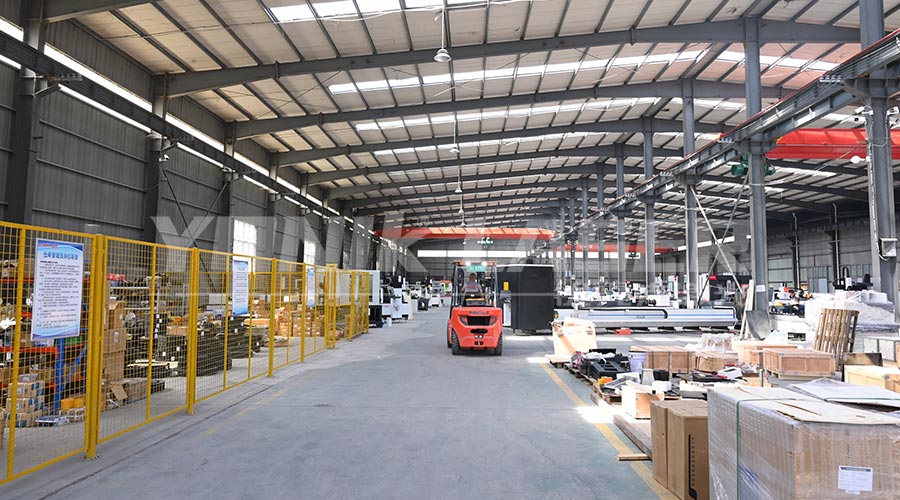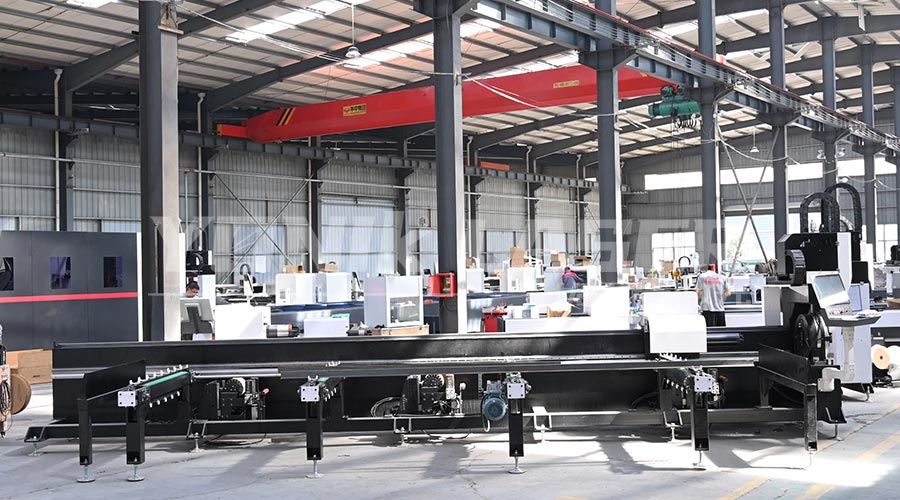In laser cutting processes, the nozzle—a critical component connecting the laser head to the material—directly impacts gas jet efficiency, slag removal capability, and cutting precision through its shape design. However, many enterprises lack systematic understanding of nozzle shape selection, often relying on experience or supplier recommendations, leading to unstable cutting quality. This article analyzes the specific effects of different nozzle shapes on cutting performance from the perspectives of gas dynamics, material adaptability, and practical cases, providing theoretical guidance for enterprises to optimize process parameters.

1. Core Functions and Shape Classification of Nozzles
The primary functions of a nozzle in a fiber laser cutting machine include:
Controlling auxiliary gas flow: Guiding gases like oxygen or nitrogen to vertically jet toward the cutting area, preventing material oxidation or slag adhesion;
Protecting the focusing lens: Reducing contamination from molten metal splashes;
Regulating cutting gas pressure: Optimizing gas flow velocity through nozzle aperture and shape to enhance cutting efficiency.
Common nozzle shapes in the market can be categorized into three types:
Straight-tube nozzle: Uniform aperture, stable gas flow, suitable for thin plate cutting;
Tapered nozzle: Gradually narrowing exit aperture, concentrated gas flow velocity, ideal for medium- and thick-plate cutting;
Stepped nozzle: Combines straight-tube and tapered designs, balancing gas stability and flow velocity, suitable for high-precision scenarios.
2. Impact of Nozzle Shape on Gas Dynamics
Nozzle shape directly determines the jet effect of auxiliary gas, thereby influencing cutting quality:
2.1 Straight-Tube Nozzle: Stable but Limited Applicability
With low gas flow resistance and wide jet range, straight-tube nozzles are suitable for thin plates (<3mm). For example, cutting 1mm stainless steel with a straight-tube nozzle ensures uniform gas coverage, effectively suppressing slag splashes. However, for materials thicker than 5mm, insufficient gas flow velocity may cause slag adhesion and reduced cut verticality (>2°).
2.2 Tapered Nozzle: Concentrated Flow Velocity for Thick-Plate Cutting
By narrowing the exit aperture, tapered nozzles increase gas flow velocity by 30–50%. When cutting 8mm carbon steel, the concentrated gas pressure of a tapered nozzle rapidly blows away molten metal, minimizing slag adhesion. However, tapered nozzles require high installation precision; a tilt exceeding 0.5° may cause gas jet deviation, leading to slag accumulation on one side of the cut.
2.3 Stepped Nozzle: Balancing Stability and Efficiency
Combining a straight-tube section for initial gas stability and a tapered section for enhanced flow velocity, stepped nozzles offer a compromise. Experimental data shows that cutting 5mm aluminum alloy with a stepped nozzle reduces cut width by 0.2mm and heat-affected zone (HAZ) by 15% compared to straight-tube nozzles.
3. Adaptability of Nozzle Shapes to Material Types
Different materials require varying gas jet pressures and flow velocities, necessitating nozzle shapes that match material characteristics:
3.1 Stainless Steel Cutting: Tapered Nozzle Preferred
Stainless steel’s low thermal conductivity leads to viscous slag. The high-velocity gas from a tapered nozzle rapidly cools slag, preventing re-adhesion. For instance, cutting 3mm stainless steel with a tapered nozzle and nitrogen (pressure 18bar) achieves a surface roughness (Ra) of ≤3μm.
3.2 Carbon Steel Cutting: Straight-Tube or Stepped Nozzle Optimal
Carbon steel cutting relies on oxygen-assisted combustion, requiring stable gas flow for uniform oxidation. Straight-tube nozzles outperform tapered ones in gas distribution uniformity, reducing edge oxidation layer thickness (<0.1mm). For carbon steel >8mm, stepped nozzles accelerate oxide skin removal by boosting rear-section flow velocity, improving cutting speed by 10–20%.
3.3 Aluminum Cutting: Stepped Nozzle Reduces Reflection
Aluminum’s high reflectivity causes laser energy loss. Stepped nozzles optimize gas jet angles, minimizing laser reflection and enhancing energy utilization. Experiments show that cutting 2mm aluminum with a stepped nozzle increases cutting speed by 25% compared to tapered nozzles, with no wavy cuts.
4. Quantitative Relationship Between Nozzle Shape and Cutting Precision
Cutting precision (e.g., cut width, verticality, HAZ) is a core metric for evaluating nozzle performance:
4.1 Cut Width Control
Nozzle exit aperture and shape determine gas focusing capability. For example, a straight-tube nozzle (aperture 1.5mm) cutting 3mm carbon steel produces a cut width of 0.3mm, while a tapered nozzle (exit aperture 1.0mm) reduces this to 0.2mm under the same conditions.
4.2 Cut Verticality Optimization
The concentrated gas jet of tapered nozzles minimizes lateral material melting, keeping verticality error ≤1°. In contrast, straight-tube nozzles may cause verticality errors >2° due to gas diffusion, requiring speed adjustments to compensate.
4.3 Heat-Affected Zone (HAZ) Suppression
Stepped nozzles use graded gas flow: low velocity in the front section reduces material preheating, while high velocity in the rear section rapidly cools the cut, limiting HAZ width to ≤0.5mm (vs. 0.8mm for straight-tube nozzles).
5. Practical Case: Nozzle Shape’s Impact on Production Efficiency
An automotive parts manufacturer previously faced cutting quality fluctuations due to improper nozzle selection:
Issue: Cutting 5mm stainless steel with a straight-tube nozzle resulted in >15% slag adhesion rate, requiring manual secondary grinding;
Solution: Switched to a tapered nozzle (exit aperture 1.2mm) with nitrogen pressure adjusted to 20bar;
Outcome: Slag adhesion rate dropped to 2%, cutting speed increased by 30%, and per-piece processing cost reduced by $0.07.
6. Nozzle Selection and Maintenance Recommendations
Select by Material Thickness: Use straight-tube for thin plates (<3mm), tapered or stepped for medium-thick plates (3–10mm), and tapered for thick plates (>10mm);
Regularly Inspect Nozzle Wear: Replace nozzles when aperture wear exceeds 0.1mm to maintain gas flow velocity;
Clean and Calibrate: Remove slag from nozzle walls daily and check jet direction deviation quarterly using laser alignment tools.

Conclusion
Nozzle shape, a “small component with big impact” in fiber laser cutting machines, directly affects cutting quality, efficiency, and cost. Enterprises must select nozzle shapes based on material type, thickness, and processing requirements, and ensure performance stability through regular maintenance. Optimizing nozzle design not only improves cut precision but also extends equipment lifespan, providing robust support for intelligent manufacturing.
2025-07-22
2025-07-21
2025-07-19